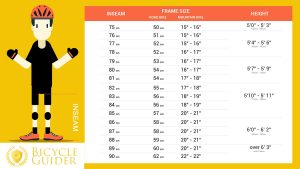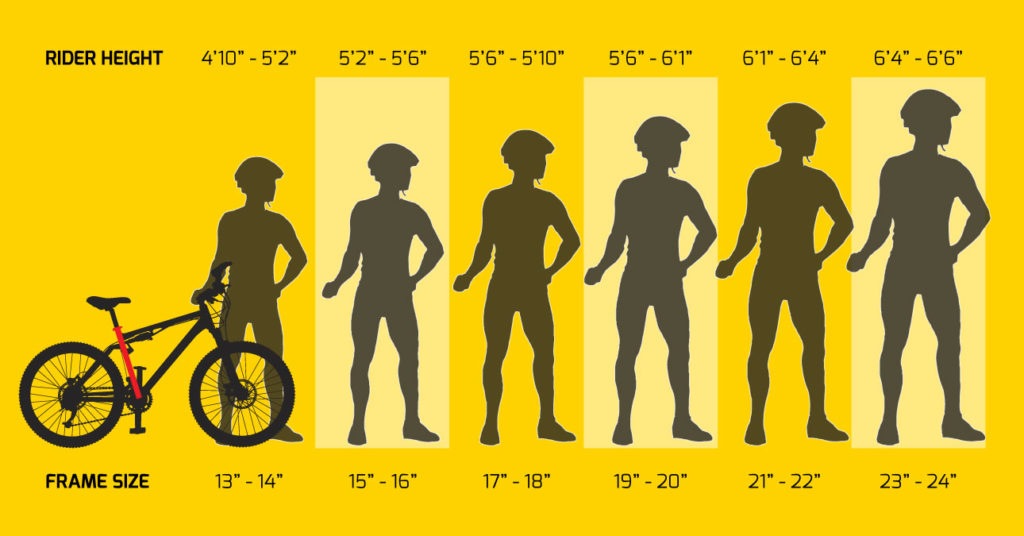Choosing the Right Frame Size Bike for Your Height
When it comes to cycling, one of the most crucial factors to consider is the frame size of your bike. Riding a bike that doesn’t fit your height properly can lead to discomfort, poor performance, and even injuries. To ensure an enjoyable and safe cycling experience, it’s essential to choose the right frame size for your height. In this comprehensive guide, we’ll explore how to determine the ideal frame size for you, factors to consider, and why it matters.
Why Does Frame Size Matter?
The frame size of your bike plays a pivotal role in your comfort and performance while cycling. A bike with the correct frame size allows you to:
1. Achieve Optimal Riding Position
A properly sized frame ensures that you can maintain the correct riding posture. This not only enhances your comfort but also minimizes the risk of strain on your back, neck, and shoulders. When your body is in the right position, you can ride longer distances with less fatigue.
2. Control Your Bike Effectively
The right frame size allows you to have better control over your bike. You can navigate corners, handle rough terrain, and make quick maneuvers with ease. This is especially important for mountain biking, where precise control can make a significant difference in your safety and enjoyment.
3. Prevent Overuse Injuries
A bike that doesn’t fit your height can lead to overuse injuries, such as knee pain or lower back strain. By selecting the appropriate frame size, you reduce the risk of these injuries and ensure a more sustainable cycling experience.
Determining Your Ideal Frame Size
Now that you understand why frame size matters, let’s explore how to determine the right size for your height.

1. Measure Your Inseam Length
The inseam length is the distance from your crotch to the floor. To measure it accurately, stand barefoot with your feet shoulder-width apart and place a book or a flat object between your legs, mimicking the position of a bike saddle. Measure from the top of the book to the floor.
2. Consult a Bike Size Chart
Most bike manufacturers provide size charts that recommend frame sizes based on your inseam length. These charts typically categorize frame sizes into small, medium, large, and extra-large. Match your inseam measurement with the recommended frame size on the chart.
3. Test Ride if Possible
If you have the opportunity, it’s always a good idea to test ride a bike before purchasing it. Even if the size chart suggests a specific frame size, personal preferences and body proportions can vary. A test ride will help you confirm that the chosen frame size feels comfortable and suits your riding style.
Factors to Consider
While inseam length is a crucial factor in determining frame size, there are other considerations to keep in mind:
1. Riding Style
Your intended riding style influences the frame size you should choose. For example, if you plan to do a lot of off-road or mountain biking, you may prefer a slightly smaller frame for better maneuverability. Conversely, if you’re into long-distance road cycling, a slightly larger frame might provide a more comfortable, stretched-out riding position.
2. Bike Type
Different types of bikes have varying frame geometries. Road bikes, mountain bikes, and hybrid bikes have distinct frame designs that can affect your riding posture. Make sure the frame type aligns with your intended use.
3. Frame Material
Frame materials like aluminum, carbon fiber, and steel can affect the overall feel of the bike. Some materials offer more flexibility and shock absorption, while others prioritize stiffness and responsiveness. Consider how the frame material complements your height and riding style. For bike frame materials see here.
4. Fine-Tuning with Components
Even if you’ve selected the right frame size, minor adjustments can be made with components like the saddle height, stem length, and handlebar positioning. These adjustments can further optimize your riding position for comfort and performance.
Conclusion
Choosing the right frame size for your bike is essential for a comfortable and enjoyable cycling experience. By measuring your inseam length, consulting size charts, and considering factors such as riding style, bike type, and frame material, you can make an informed decision. Remember that personal preferences play a role, so don’t hesitate to test ride if possible. Ultimately, the perfect frame size will allow you to ride with ease, control, and confidence, enhancing your overall cycling journey.




